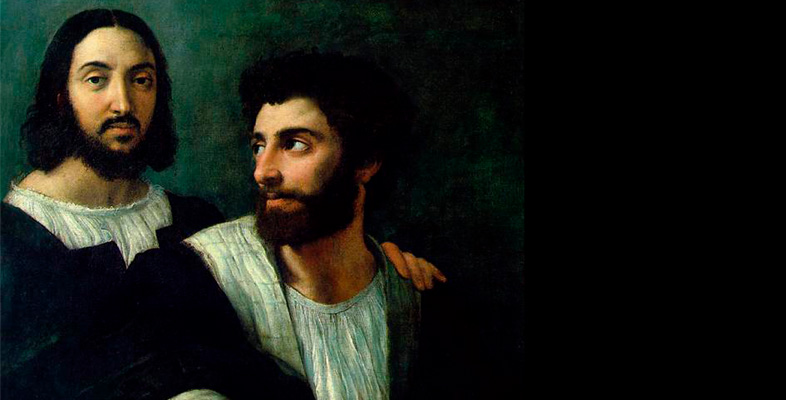Conclusion
We can begin to sum up some of the artistic and social ideals that Raphael and his work have seemed to represent for generations who have followed him.
As you’ve discovered in this free course, Artists and authorship: the case of Raphael, ‘Raphael’ has been a powerful ideal for artists and critics in the centuries since his death as a seemingly timeless standard of great art, whatever is high, spiritual and lofty, a channel of the divine and perfect or, arguably, an escapist fantasy of the social and intellectual elite. So much about his real life and his biographical one is suited to these roles: his name, his beauty, and his death in the prime of his youth before his body and his art could experience decline. The essence of Raphael’s persona – even soon after his death – was subsumed into a concept of the High Renaissance, a moment which, from the sixteenth century onwards, has been synonymous with perfection itself.
The historical life cycle described by the term ‘Renaissance’ is essentially a history of the classical style. Art first undergoes a formative early period, reaches a pinnacle of ideal purity achieved in high classicism, and then begins to decline as art somehow becomes worse or decadent. As Gombrich’s ‘Norm and form’ described, the styles (Gothic, Renaissance, Mannerist, Baroque, etc.) that have been so predominant in art history all presuppose ‘the classical’ as a normative, enduring and timeless ideal (Gombrich, 1971). Raphael’s Roman works, in his own lifetime and in his reception by academic artists, came to be closely associated with the perfection and enduring values that ‘the classical’ represents. The artist’s death at the apex of his own achievement has thus seemed to articulate a change in the life cycle of art itself, as the end of a high-classical peak.
Critics and tastemakers from Gian Pietro Bellori in the seventeenth century to Johan Joachim Winckelmann in the eighteenth defined Raphael as the greatest master of the classical style. For the artist-followers who modelled themselves on Raphael’s career (such as Parmigianino, Zuccaro, Poussin, Mengs and Ingres), his stature appealed to their sense of social ambition, his artistic style to the classical ideal.
In social and cultural terms, Raphael seems to represent a Golden Age of social and religious harmony, since he worked at a moment in time just before the Protestant revolution. In this it is no coincidence that his style is used as the model for so much devout, sentimental and apolitical Catholic art, past and present.
